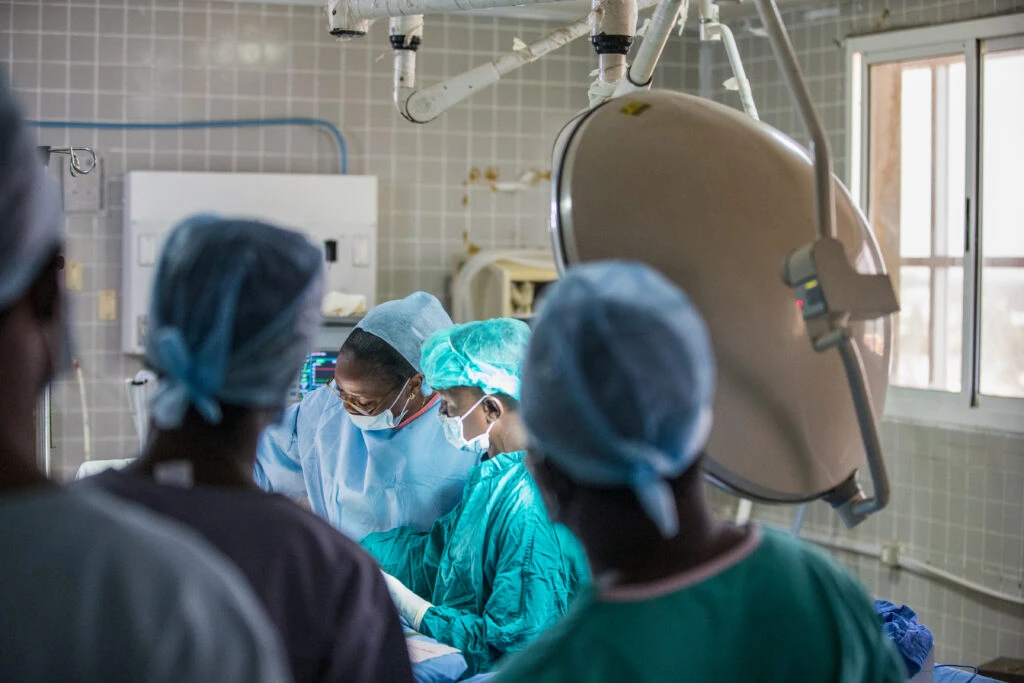
How cloud-based math modeling can reduce organ transplant risk
 Some of the most interesting scientific discoveries happen at the intersection between disciplines—and sometimes those discoveries can even save lives. That’s what two researchers at the University of North Carolina learned with organ transplantation, when they set out to find a better way to match donors with recipients.
Some of the most interesting scientific discoveries happen at the intersection between disciplines—and sometimes those discoveries can even save lives. That’s what two researchers at the University of North Carolina learned with organ transplantation, when they set out to find a better way to match donors with recipients.
The organ transplant process is time-sensitive and high-stakes. There’s a moment when you need to quickly figure out who’s available to receive a transplant and who has the best chance at a successful match based on available medical data.
The process can be very time-consuming and is typically done by hand, which can create a backlog that results in organ waste. In fact, the US has the highest rate of organ waste in the world.
Math meets biology for better matchmaking
Dr. Eric Weimer, associate professor at the UNC Department of Pathology and Laboratory Medicine, knew that there must be a more efficient process for analyzing the factors known to impact transplant outcomes. “I had the idea many years ago that someone who understands math at a far better level than myself could probably help,” says Weimer.
Dr. Katharine Newhall, associate professor of mathematics at UNC Chapel Hill, shared Weimer’s enthusiasm. But the two soon realized that the project needed to move to the cloud. That simple idea—to port the project to Azure—soon became a wider collaboration, leading to unexpected benefits and significant clinical insights.
“Don’t worry, it’s machine learning—it’ll work”
“So initially, working with Microsoft, it was, ‘Here’s the existing code, please just port it onto the cloud, translate it over,’” says Newhall. “But very quickly, Microsoft said, ‘Maybe we should go back and look at the whole problem. Maybe there’s a more efficient way to handle the data and build some machine learning models.” So Newhall and Weimer began teaching a team of Azure data scientists some of the science and logic behind their project.
“Our collaboration really came out of that,” says Newhall, “of how we can meet in the middle between mathematics and biology.” The Azure data scientists soon identified opportunities where Newhall and Weimer could take advantage of data sets that they weren’t using because of gaps in the data. “And Eric and I go, ‘Yeah, but scientifically, that doesn’t really make sense,’” says Newhall. “And they’re going, ‘No, don’t worry, it’s machine learning. It’ll work.’”
Then over the course of eight weeks, the data scientists helped Newhall and Weimer operationalize and automate the transplant matching process. Rather than the current standard of one-recipient, one-donor comparisons, the new process allows for evaluation of an essentially unlimited number of recipient-donor pairs.
The gold standard for the semi-manual matching process currently used by every US transplant center today predicts donor-recipient matches with 91 percent accuracy. The new models the team developed have increased that accuracy to 98 percent, and seven hospitals are already planning to pilot the team’s work. Those better match-finding results are helping save both money and time—and with organ transplantation, saving time can mean saving lives. (For more details on the improved matching process, see this presentation by the UNC team.)
Prebuilt for progress
As the UNC team looks ahead to future projects, they reflected on their experience with Azure, sharing thoughts for fellow scientists who might be considering this sort of research and the role that cloud, AI, and machine learning can play.
Newhall said she especially appreciated the prebuilt nature of many Azure tools. “It’s much faster to learn how to use if it’s sort of already there,” says Newhall. “You’re like, ‘OK, I can just tweak this one thing. Oh, I’ll put in this piece and take that piece out, rather than having to build the whole thing from scratch.” She also liked how easy it was for multiple people to use the same code across different systems.
Weimer appreciates that you don’t have to be a developer to take advantage of many Azure tools. “The Microsoft cloud environment spanned the gamut from drag-and-drop options—for the non-coders out there—to customized, write-your-own-Python-level code,” says Weimer. “It’s important, especially as a biologist, to understand that you don’t have to come in being a programming specialist to start utilizing these resources.”
If you’re a researcher hoping to learn more about Azure, we encourage you to check out the many resources tailored for scientific research:
- Explore all of your Academic Research possibilities at Microsoft.
- Join the Azure Research Office Hours for Education.
- Learn how to manage research workloads in the cloud with free, on-demand training for research professionals.
- Enroll in the NIH STRIDES Initiative.
- Watch the conversation between Weimer, Newhall, and Microsoft Vice President and Distinguished Scientist Ashley Llorens at our US Public Sector Summit.




